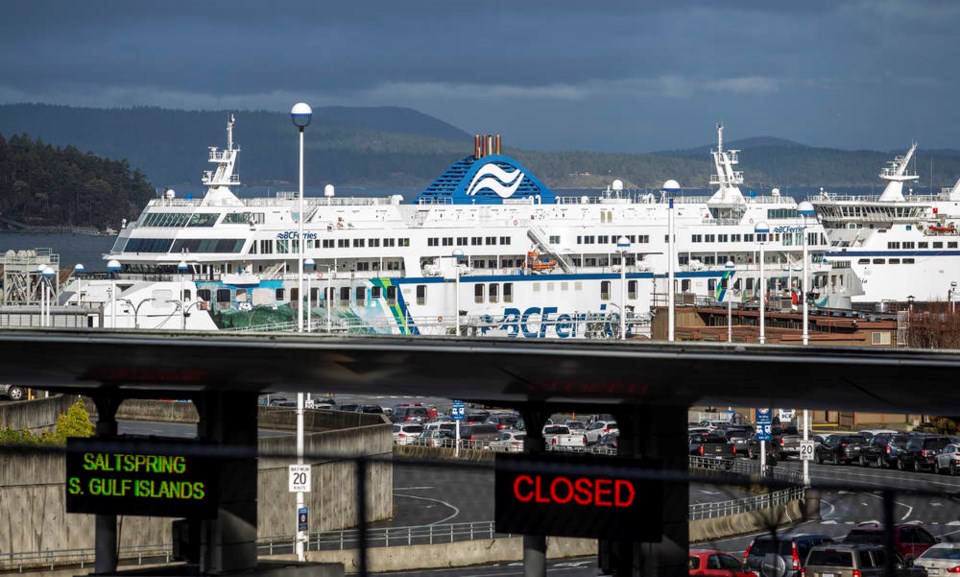B.C. Ferries rolled out new fare options Wednesday designed to reduce sailing waits and improve efficiency on its three routes between Vancouver Island and the Lower Mainland.
A new “saver fare” — ranging from $49 to $73.70 for a car and driver — will be available on less busy sailings throughout the year between Swartz Bay and Tsawwassen, Duke Point and Tsawwassen, and Departure Bay and Horseshoe Bay, the company said.
As well, a new pre-paid option for all sailings will allow customers to pay for travel in advance and save time checking in at the terminal.
B.C. Ferries said the changes take effect today. Travel is currently limited to people sailing for work and other essential purposes.
“We want the system to be ready for when the travel orders are lifted and British Columbians can get out there and travel again,” Mark Collins, chief executive officer, said in an interview. “So we want the system to be up and running and fully debugged and ready to go.
“We wouldn’t want to launch it on the first day that the [the provincial health officer’s] orders are lifted and then have it not work very well.”
The saver fare will start at $73.70 — including reservation fee — for a car and driver, but will drop as low as $49 on less-busy sailings.
A limited number of the fares will be available for customers able to pay in advance and travel on less busy sailings in the early morning or late evening, at midday during the week and on Saturday afternoon or Sunday morning.
“The saver fare addresses affordability and it addresses peak period overloads,” Collins said.
“If we can … give people a reason to travel at off-peak times — and that’s where the saver fares will be applicable — then we free up capacity at peak times so more people get to travel when they want to travel.”
He said the changes are “revenue neutral” because the money raised by moving more people will offset the savings passed on to customers.
“Our goal is not to to drive huge revenues,” he said. “Our goal on this is to shift the peaks and to provide affordable travel for British Columbians during the economic recovery.”
Collins said the company chose to launch the new fare options on routes between Vancouver Island and the Lower Mainland because they account for 65 per cent of all traffic.
“So you get the biggest bang for your buck and then we’ll look to see over time if it’s working and how we can apply it to the advantage of travellers on other routes.”
The previous travel options remain in place.
A car and driver will still be able to arrive at the terminal without a reservation and pay $74.70 to travel on the next available sailing. They’ll also be able to pay $10-$17 to reserve a spot in advance, depending on whether they book over or under seven days from the time of travel, and then pay the car and driver fares at the terminal.
Ferry fares are set to rise by 2.3 per cent on April 1.



